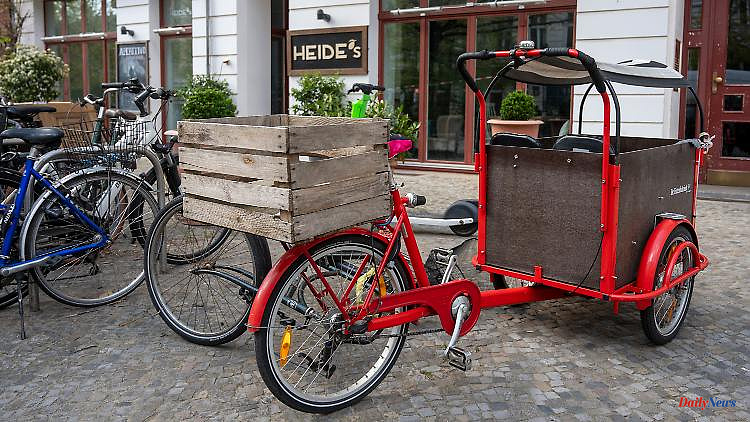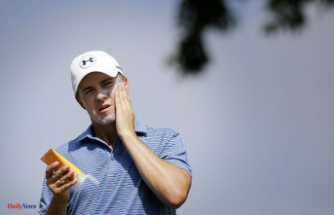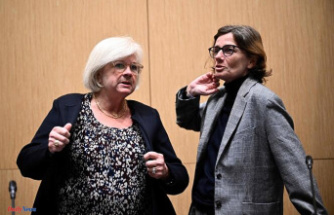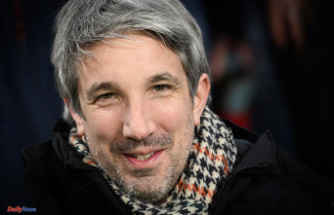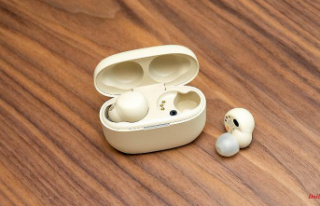First a district becomes more and more beautiful, then more and more expensive. Many know that. But how exactly can change be determined? What do cargo bikes, greyhounds and climbing gyms have to do with it? A look at Berlin and New York.
First come the students and artists, then the cafés and restaurants. The expensive ice cream parlor with flavors like apple basil or banana pecan goat milk caramel. The shop for retro bicycles or Danish teak furniture from the 1960s. Then the investors come, buy apartments and renovate them so expensively that the long-established tenants can no longer afford them. This is the common understanding of the process of gentrification in big cities. To put it simply: it will be more liveable and beautiful, but that has its price.
As early as 1981, in the days of the Federal Republic of Germany, "Der Spiegel" reported on tenant displacement and luxury modernization in Munich-Schwabing and on the Hamburg Alster. At that time it was said: "Bonn wants to protect the old tenants with better laws." Today the situation has gotten so critical that in the elections in Berlin the majority voted for the expropriation of real estate groups. Gentrification has long become a combat term and has been researched a lot.
That being said, what is the current status? How do you recognize that a district is first hip and then expensive? According to the cliché, it used to be the latte macchiato, but today the harbingers have changed. In Berlin one could currently think: Are these possibly cargo bikes now? Expensive bakeries with English speaking staff, with queues like outside a club? Cafes that call cheese toast "Grilled Cheese" and salad bowls "Bowls"? Or more people with noble greyhounds?
So how do you recognize status and money in the neighborhood? The author and Berlin connoisseur Tanja Dückers has a lot to say about this. As a dog owner, she is often out and about in Mauerpark, located between expensive Prenzlauer Berg and the hotspot districts of neighboring Wedding. She sees a lot more noble and expensive dog breeds there than before. "The greyhound finding is correct," she says.
Other signs of money in the neighborhood: "Shops with strange things that nobody needs." She thinks of a bonsai tree shop, insanely expensive and "total humbug". Or typical events of a bored society, such as shops that earn their money with courses in making chocolates - Dückers calls them "ennui stories" (after the French word for boredom). What she has also noticed in recent years is the high density of yoga studios and practices for therapy such as couple hypnosis or for coaching. "I could have endless therapy."
One should not see the change in a big city like Berlin in too black and white, Dückers makes clear. "Anyone who gets angry about it isn't the unemployed drinker, but people from culture and the media." She has no longing for the old days: Looking back, she finds the West Berlin in which she grew up "really stuffy".
The Berlin author and city expert Ulrike Sterblich, who has lived in Prenzlauer Berg for 14 years, also views the debate with mixed feelings. It's not about frothing milk, anyone can do that, she says, referring to the times when latte macchiato and "Bionade Biedermeier" stood for gentrification. For them, it's about social justice. If a neighborhood becomes more livable, that's not bad from their point of view. "The problem is when the prices explode and the displacement begins. You have to get there, not the milk froth."
Sterblich thinks of parts of her family who live in the third generation in what was once the focal point and is now hip Neukölln. "Did they like it when there were only gambling dens, nail salons and empty stores?" Of course not. "They're happy when young students live there." And anyway: whether the people in the cheap chains would be paid better than in the small individual shops? From their point of view, Berlin has not yet been fully gentrified. During the Corona period, Sterblich explored an area very close to her neighborhood, north of Danziger Strasse, one of the city's central axes. "The laundry is still hanging in the courtyard and it looks like it was 1960."
Typical Berlin: Expensive neighborhoods and rough pavement are often close together or mix, you can see that on Neukölln's Hermannstraße and in Wedding. There, young people have discovered late night shops and pubs called "Zum Schinken". It's still a bit like it used to be there. "Actually, something like this is only iconic because it's nostalgic," says Sterblich.
Tanja Dückers also identifies a few corners with originality, in the west in parts of Halensee, Reinickendorf, Spandau and Tempelhof, in the east in Treptow-Köpenick. "Fortunately, Berlin is big enough for several trends to take place at the same time." And: The "latte macchiato, ginger, soy culture" will also be historical at some point when something new comes along.
In New York, new branches from supermarkets like Whole Foods and TD Bank indicate an area is becoming ritzier. By the time the hipster coffee shops come up with raffia lamps throwing stimulating patterns on the walls, it's usually well advanced. A neighborhood often becomes livelier and younger as a result of the changes - but in New York it is often also less diverse because poorer, often non-white people are pushed out.
A few decades ago, a few blocks in Manhattan were still considered dangerous, today nothing is rough in the heart of the lifestyle metropolis. On the contrary, most of the neighborhoods here belong to the so-called super-gentrified neighborhoods, where monthly rents for three-bedroom apartments can easily reach $10,000 (around €9,500). A famous example of gentrification is the Meatpacking District, now no longer characterized by meat factories but by lofts.
Only a few minutes away on the Lower East Side in Manhattan is the legendary Jewish specialty shop "Katz's Delicatessen" for over 130 years. While many institutions in the area had to close, Katz's was immortalized as a prominent setting in the film Harry and Sally. But here, too, the prices have been adjusted to the pulse of gentrification: for the house classic - pastrami sandwich on rye bread - 30 dollars (28.50 euros) are now due with taxes and tips.
In Brooklyn, across the East River, the state of gentrification can also be seen in the density of climbing gyms. In the increasingly popular Greenpoint, a traditional Polish working-class district, "Vital" recently opened. In addition to climbing walls, there is also yoga, fitness, good coffee and strong WiFi, which the newcomer can use at long tables to take the next zoom call. Bouldering has become a trend sport for the young, well-built and well-heeled in the USA. Because climbing, you have to be able to afford it first. Out in the real wilderness, they fly to the best rock walls in Oregon, West Virginia or Nevada, need lots of carabiners, ultra-light ropes and faux leather shoes. In the city, climbing becomes indoor bouldering. This is available as a subscription for well over 100 euros a month, but with an attitude towards life.
The new residents are having a big impact on Greenpoint, says Geoffrey Cobb, who has written several books about the borough. "The way the prices have gone up is absolutely insane," he says. But they also mean higher tax revenues and therefore better maintained parks and roads. Greenpoint was once the dirty heart of the East Coast oil industry, Cobb said. "It used to be a polluted place. And now it's this super cool area."

